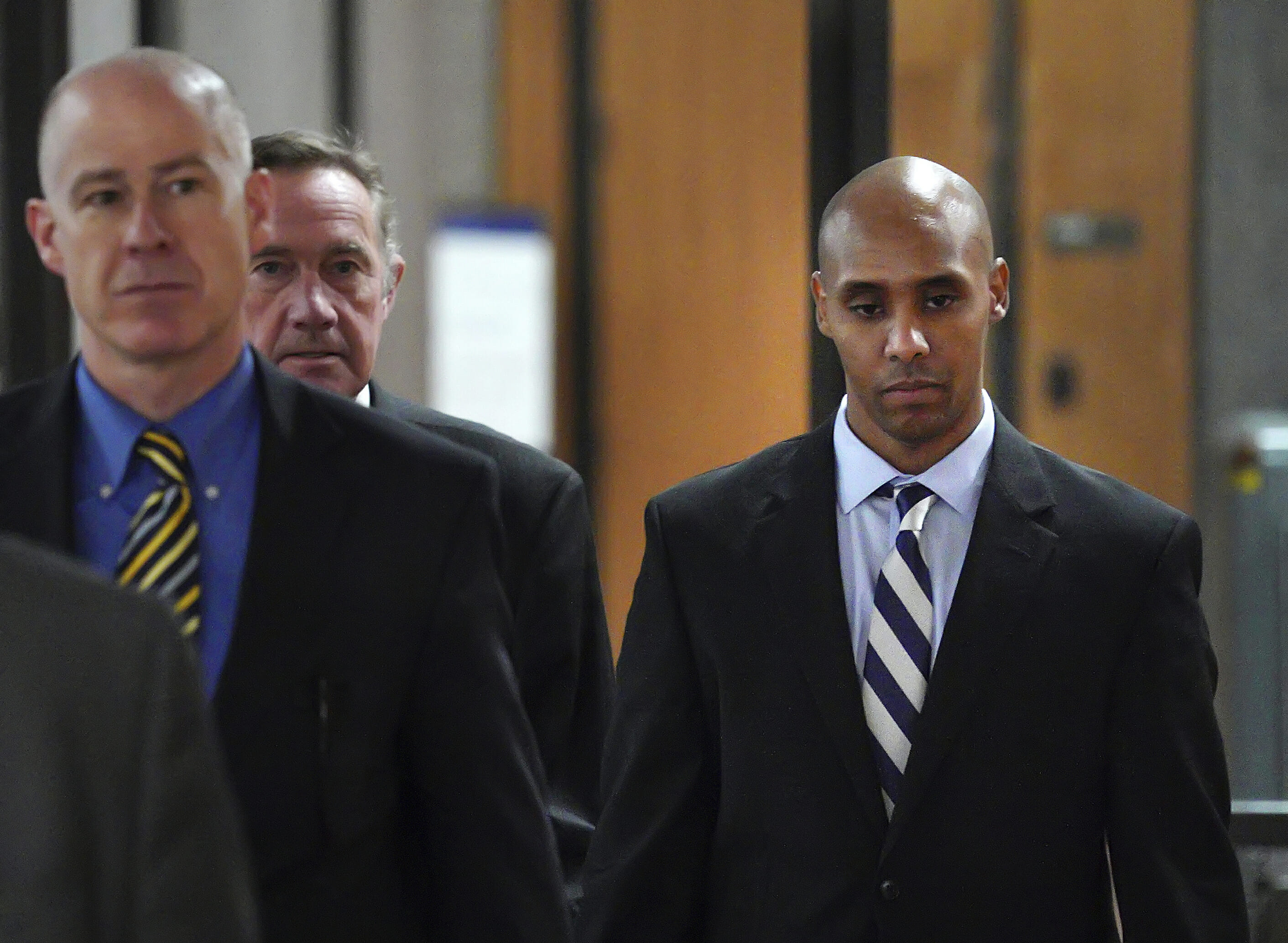
Prosecutor: 'No basis' for Minneapolis cop to shoot woman
MINNEAPOLIS (AP) — A prosecutor criticized a former Minneapolis police officer for his decision to shoot an unarmed woman who approached his squad car, suggesting Friday that he had “no basis” to believe she had a weapon when he couldn’t see her hands.
Prosecutor Amy Sweasy pressed Mohamed Noor to explain why he didn’t choose another option before he shot Justine Ruszczyk Damond in July 2017, just minutes after she called 911 to report a possible sexual assault in the alley behind her house.
Sweasy asked Noor why he couldn’t have told Damond to step back, tell his partner to drive, or tell his partner to get down.
“I had to make a split-second decision,” Noor testified. He said he felt he had no other choice but to shoot under the circumstances, after he heard a bang on the driver’s side of the squad car, saw his partner look afraid and try to pull out his gun, and then saw a woman at the driver’s side window, raising her arm.
Noor’s testimony came near the end of the fourth week in his trial on murder and manslaughter charges in the death of Damond, a 40-year-old dual citizen of the U.S. and Australia. The defense rested its case at the end of Friday’s court day. The prosecution is expected to call at least one rebuttal witness on Monday before closing arguments, and the judge told jurors to expect to begin deliberating Monday.
She said they will be sequestered once deliberations begin.
Noor, 33, was fired after being charged. His attorneys have argued that he was justified in using deadly force to protect himself and partner Matthew Harrity from a perceived threat. Prosecutors have argued there was no reasonable threat, and questioned whether the supposed bang on the squad car was invented.
Sweasy reminded Noor of testimony Thursday in which he said reacting too late to a threat means officers can die.
“It’s also true if you don’t do your job correctly, someone else could get killed,” Sweasy said.
Noor’s attorney, Thomas Plunkett, asked Noor what would have happened if the person approaching the squad car had had a weapon.
“My partner would have been killed,” Noor answered.
Noor’s testimony resumed Friday, a day after he took the stand in his own defense and for the first time began publicly talking about the night of Damond’s death; Noor had refused to talk to investigators since the shooting.
He described his training in various police skills including “counter-ambush” training that included scenarios such as two officers in a squad car, doing routine tasks, and an instructor yelling “Threat!” The officers had to make a quick decision about whether to shoot, Noor said.
Emanuel Kapelsohn, a use-of-force expert, testified for the defense Friday that he felt Noor used reasonable force given the totality of the circumstances.
“He had to react immediately,” Kapelsohn said.
Two other use-of-force experts testified for the prosecution earlier that they felt Noor did not act reasonably.
The defense also called a woman who lives across the alley from where Damond died, Michelle LeBlanc, who said she was lying in bed that night when she heard sounds. LeBlanc described them as “boom, boom, boom” and said the first noise was loud and startled her. She said the second noise was a gunshot.
Prosecutor Patrick Lofton sought to raise questions about LeBlanc’s testimony, referring to past statements she gave to investigators and pointing out discrepancies.
The death of Damond, a life coach who was engaged to be married a month after the shooting, sparked outrage in both the U.S. and Australia, cost Minneapolis’ police chief her job and contributed to the electoral defeat of the city’s mayor a few months later.
Neither officer had a body camera running when Damond was shot, something Harrity blamed on what he called a vague policy that didn’t require it. The department toughened the policy after Damond’s death to require that the cameras be turned on when responding to a call.
Damond was white. Noor is a Somali American whose hiring two years before the shooting was celebrated by Minneapolis leaders as a sign of a diversifying police force in a city with a large population of Somali immigrants.
___
Follow Amy Forliti on Twitter: http://www.twitter.com/amyforliti
___
Check out the AP’s complete coverage of Mohamed Noor’s trial: https://apnews.com/MohamedNoortrial
The Western Journal has not reviewed this Associated Press story prior to publication. Therefore, it may contain editorial bias or may in some other way not meet our normal editorial standards. It is provided to our readers as a service from The Western Journal.
Truth and Accuracy
We are committed to truth and accuracy in all of our journalism. Read our editorial standards.
Advertise with The Western Journal and reach millions of highly engaged readers, while supporting our work. Advertise Today.











